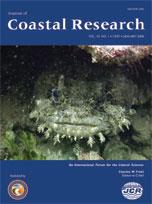Scarce land resources and growing population are compelling issues for intensively developing coastal zones in China. During the past 30 years, many coastal tidelands have been enclosed for cultivation and development. To plan and implement large-scale reclamation programs in coastal zones, timely and reliable information concerning the nature, extent and physicochemical characteristics of the coastal saline soils land is essential. Because extracting useful information from optical remote sensing imagery is often hampered by the presence of clouds and wet weather, in this study we used multitemporal European remote sensing satellite (ERS)–2 PRI synthetic aperture radar (SAR) images only for coastal land use mapping. The SAR multitemporal backscattering characteristics of main land use categories were first investigated after pseudocolor synthesizing of three temporal SAR images, extracting dikes and partitioning the study area into six subzones according to the reclamation years. Next, an iterative self-organizing data analysis (ISODATA) unsupervised classifier and a BP neural network classifier were used for the land use classification in different subzones, achieving an overall classification accuracy of 77.34% and a kappa coefficient of 0.74. In this study, we demonstrated that SAR imagery, instead of or complementary to optical satellite data, has great potential for land use mapping or resource investigations in coastal zones under rapid development.
How to translate text using browser tools
1 January 2008
Potential of Multitemporal ERS-2 SAR Imagery for Land Use Mapping in Coastal Zone of Shangyu City, China
Mingxiang Huang,
Zhou Shi,
Jianhua Gong
ACCESS THE FULL ARTICLE

Journal of Coastal Research
Vol. 2008 • No. 241
January 2008
Vol. 2008 • No. 241
January 2008
backscattering coefficient
Coastal resource
neural network
supervised
texture analysis
unsupervised classification




